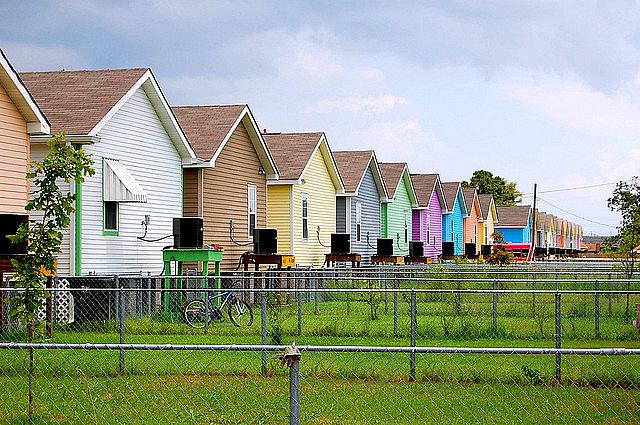Experts: More kids than ever are now insured, but challenges remain

Louisiana hasn’t expanded Medicaid yet, but the state is ahead of the curve when it comes to enrolling and keeping kids in public coverage.
When it comes to getting kids into health coverage, the numbers have never been better. By the first quarter of 2015, the percentage of kids without insurance was less than 5 percent, according to the National Health Interview Survey.
That’s down from 7.4 percent of children who were uninsured a year earlier. (Fifteen years ago, the figure was closer to 12 percent.) Among insured kids, about 55 percent are on private plans, 40 percent on public coverage.
“We’re seeing a drop in uninsurance among kids,” said Genevieve Kenney, a senior fellow at the Urban Institute, speaking at a webinar Wednesday on children’s health coverage, hosted by the National Institute for Health Care Management Foundation.
The downward trend in uninsured kids long predates the rollout of the Affordable Care Act, but as former Deputy Administrator of the Centers for Medicare and Medicaid Services Cindy Mann explained, the law is furthering the trend by spurring changes among states that make it easier for families to enroll kids in coverage and keep them enrolled — whether that happens to be Medicaid, a Children’s Health Insurance Program (CHIP), or a subsidized marketplace plan.
If the phrase “best practices” makes your eyelids droop, skip ahead a bit, but the changes Mann highlighted are basically what you might call enlightened administrative moves. Examples include states offering a single application that funnels families to the right coverage program (“No wrong door”), or the use of electronic forms of eligibility checks to speed things along, or the adoption of a 12-month renewal period for kids in Medicaid and CHIP (it turns out making parents renew their kids’ coverage every six months isn’t kind to enrollment numbers).
“The ACA brought in a new vision around eligibility and enrollment,” Mann said. “Many of the changes were some best practices that some states had adopted previously for children — having them become the law of the land has moved it to a new plane.”
Louisiana, it turns out, is a shining star when it comes to enrolling and keeping kids in Medicaid and CHIP, Mann said. The state uses strategies such as automated and “express lane” renewals that rely on income data from the state’s food stamp (SNAP) program. Phone-based outreach further keeps families from falling through the enrollment cracks. Such efforts have allowed the state to renew 95 percent of children, and largely without asking families to provide additional information.
Other states are tinkering with their post-reform Medicaid coverage in different ways, and at times that can paradoxically mean cutting benefits in the name of public health goals. Consider Indiana, a state that in 2010 had the sixth-highest infant mortality rate in the nation, with nearly eight in 1,000 babies dying before the age of 1 annually. There’s been a racial disparity as well: The mortality rate for black infants is 2.6 times higher than for whites infants.
In May 2014, Indiana announced that it’s Medicaid program would no longer pay for early elective childbirths. Such medically unnecessary births — induced prior to 39 weeks of gestation — carry a host of risks, including lung and brain developmental problems. They’re often performed out of convenience. And with stays in the neonatal intensive care unit not uncommon, they can be very expensive.
Joe Moser, Indiana’s Medicaid director, credited the policy change with changing delivery practices over the past year. “We think it’s driven the percentage of early elective deliveries from about 3 percent of all births in the state down to about 1 percent in over a year,” Moser told webinar attendees this week.
Despite the gains made in improving children’s coverage, major obstacles still exist. So far, 19 states have opted not to expand their Medicaid programs under the ACA, and as I’ve written recently, enrolling more parents in coverage is one of the best ways of getting more kids enrolled. But even when kids succeed in getting coverage, families on Medicaid and CHIP can have a harder time getting to the doctor’s office during regular hours, resulting in more after-hours and weekend ER visits, as Mann pointed out. And that can lead to higher health costs, since emergency rooms are famously expensive places to receive care.
Then there’s the larger question of CHIP’s uncertain future. Funding for the program was set to expire in September of this year, but Congress renewed funding through 2017 in April. Will the program be granted another reprieve then, or will low-income families in the program be turned over to subsidized exchange plans, which typically have fewer benefits and higher costs? And speaking of Obamacare plans, will Congress ever get around to fixing that unfortunate “family glitch,” which could prevent those very families from being eligible for premium subsidies? If history is our guide, answers to each of these will likely have to do more with politics than health policy.
[Photo by Tanya Lukasik via Flickr.]

